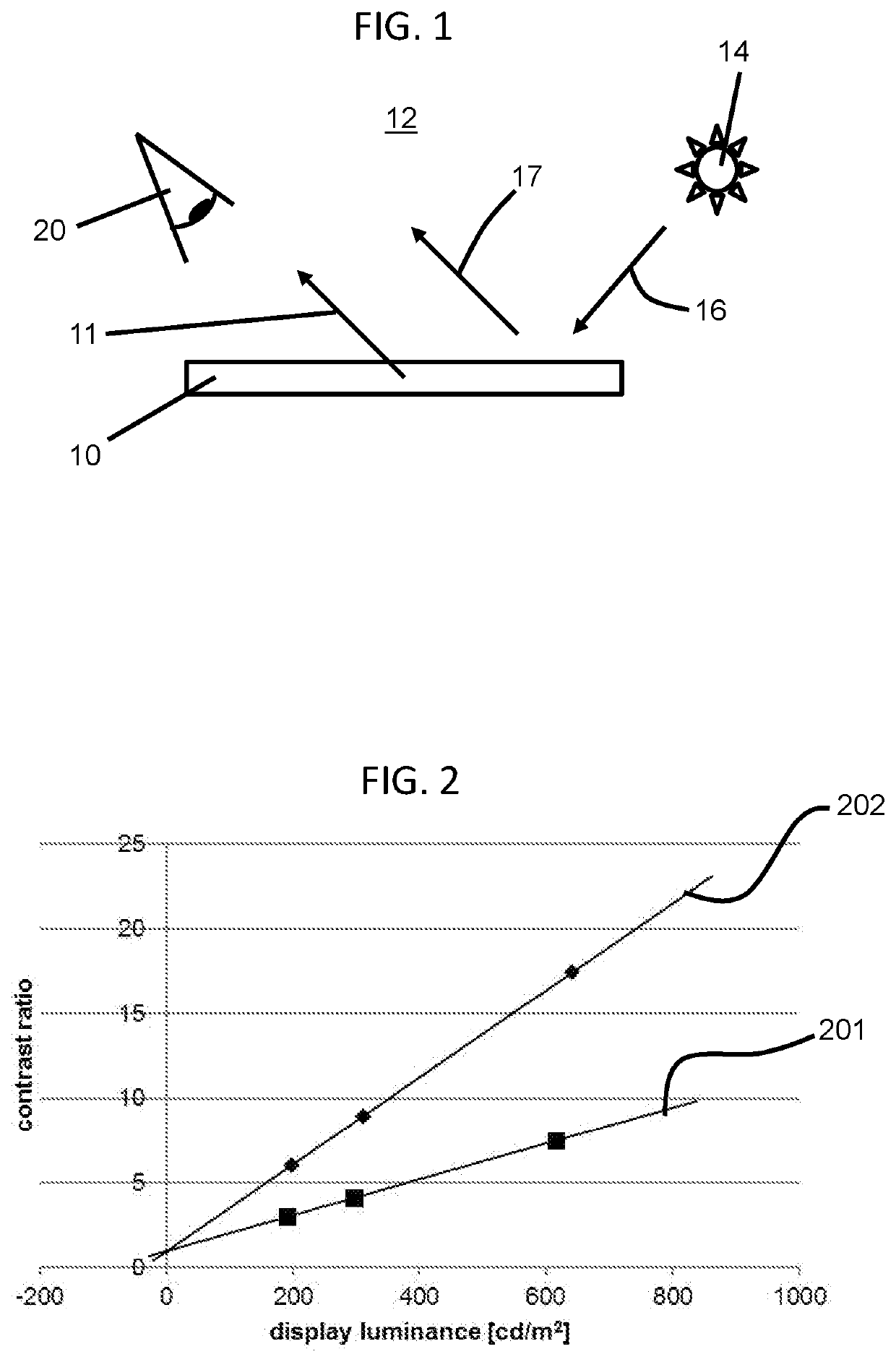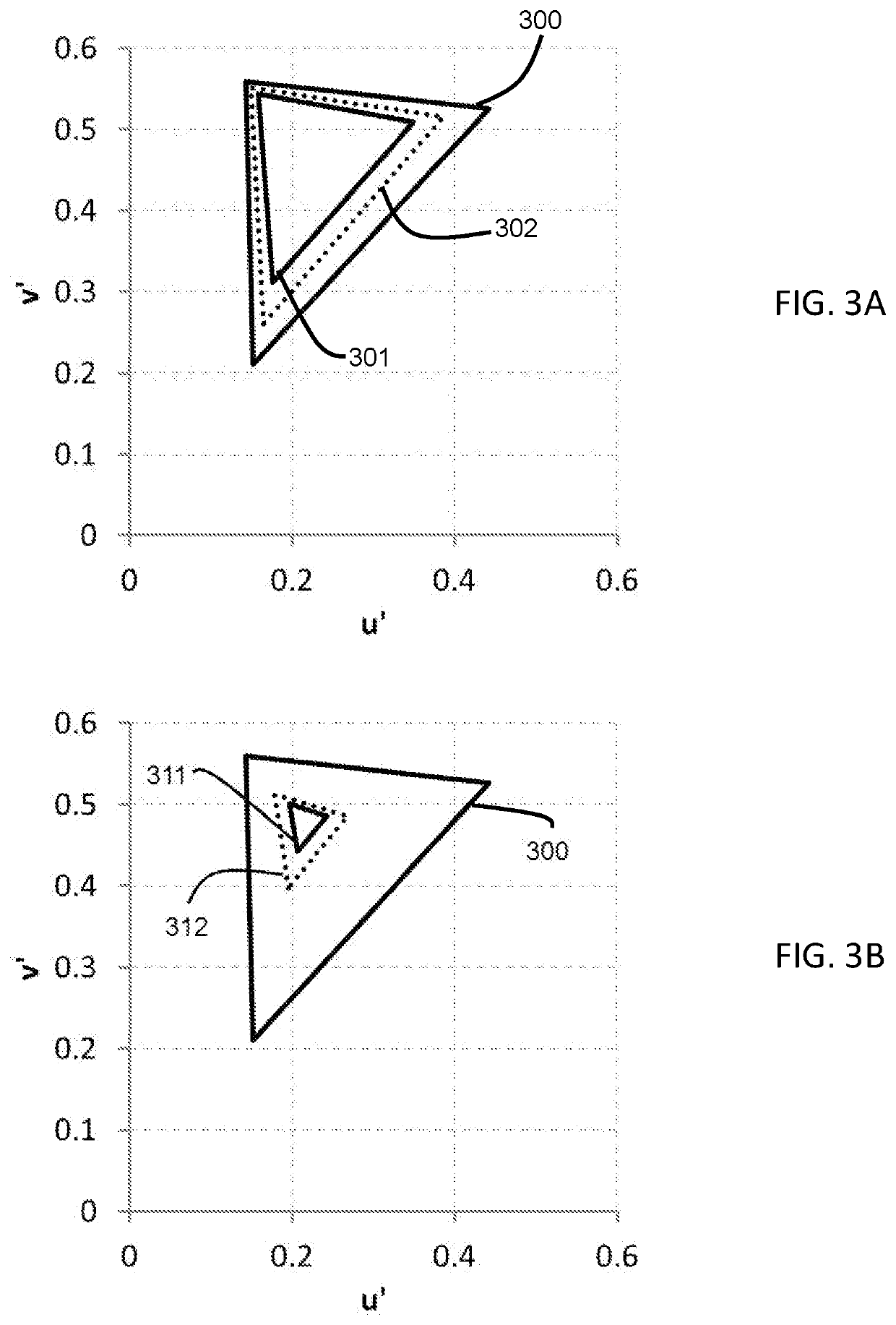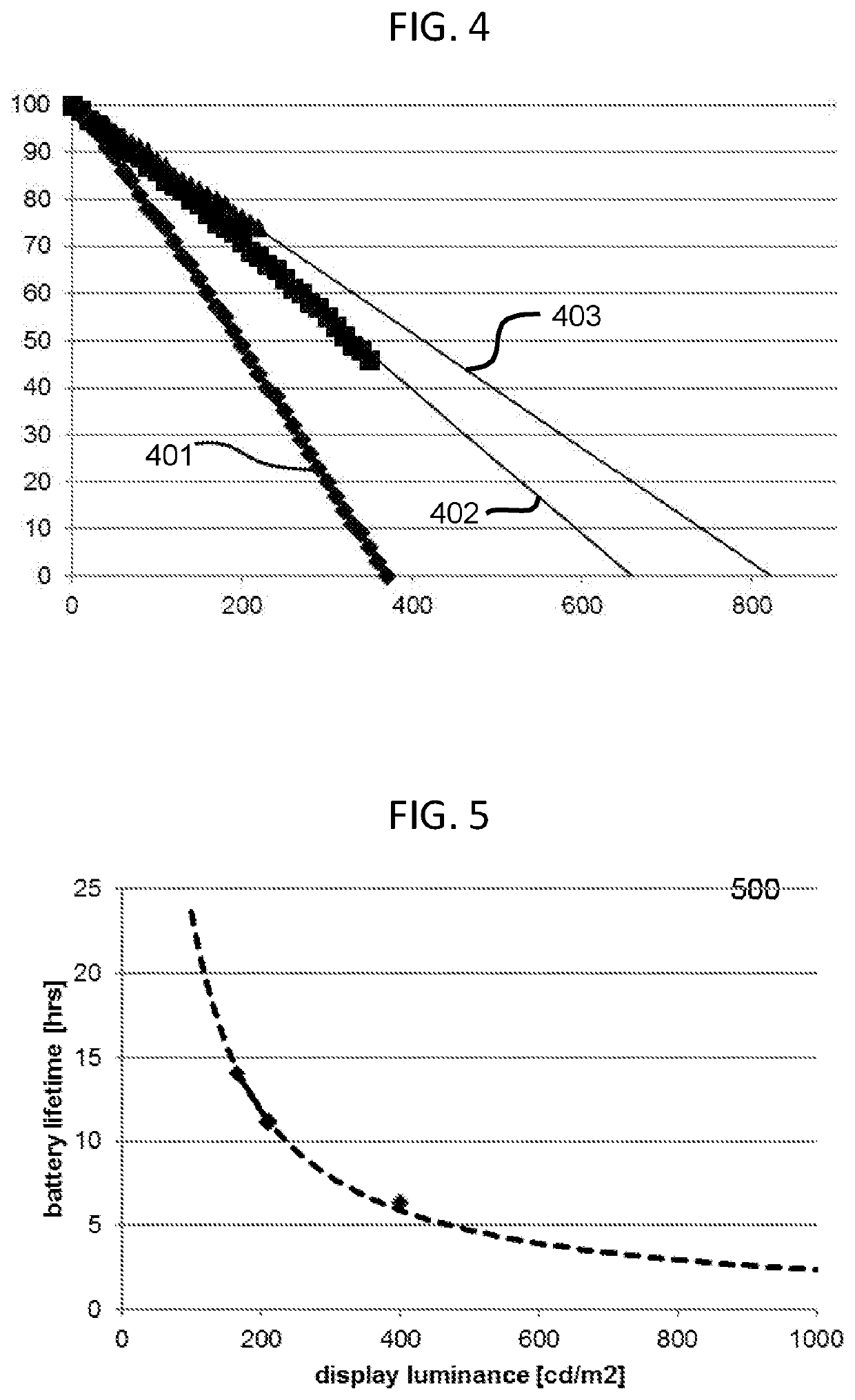Methods for achieving, and apparatus having, reduced display device energy consumption
a technology of display device and energy consumption, which is applied in the field of display device, can solve the problems of reducing the time a user can utilize the electronic device, sacrificing display image quality by reducing brightness, and user frustration, so as to reduce energy consumption, maximize battery life, and low reflection characteristics
- Summary
- Abstract
- Description
- Claims
- Application Information
AI Technical Summary
Benefits of technology
Problems solved by technology
Method used
Image
Examples
example 1
[0091]The as-fabricated samples of Example 1 (“Ex. 1”) were formed by providing a glass substrate having a nominal composition of 67 mol % SiO2, 4 mol % B2O3, 13 mol % Al2O3, 14 mol % Na2O, and 2 mol % MgO and disposing an anti-reflective coating having thirteen (13) layers on the glass substrate as shown in Table 1 below. The anti-reflective coating (e.g., as consistent with the anti-reflective coatings outlined in the disclosure) of each of the as-fabricated samples in this Example was deposited using a reactive sputtering process.
TABLE 1Anti-reflective coating attributes for Example 1RefractiveEx. 1MaterialIndexThickness (nm)LayerAir1.01SiO21.4890.52SixNy2.05150.23SiO21.4816.64SixNy2.0546.35SiO21.4896SixNy2.0520007SiO21.4810.98SixNy2.0537.39SiO21.483310 SixNy2.0523.411 SiO21.485312 SixNy2.057.613 SiO21.4825Glass substrate1.51Total thickness2502.8Reflected colorY0.7L*a*b*Hardness (GPa)@ 100 nm depth12@ 500 nm depthMax hardnessHmax (GPa)18Depth (nm)900Film stress(MPa)Surface(nm)rou...
example 2
[0092]The as-fabricated samples of Example 2 (“Ex. 2”) were formed by providing a glass substrate having a nominal composition of 67 mol % SiO2, 4 mol % B2O3, 13 mol % Al2O3, 14 mol % Na2O, and 2 mol % MgO and disposing an anti-reflective coating having thirteen (13) layers on the glass substrate as shown in Table 2 below. The anti-reflective coating (e.g., as consistent with the anti-reflective coatings outlined in the disclosure) of each of the as-fabricated samples in this Example was deposited using a reactive sputtering process.
TABLE 2Anti-reflective coating attributes for Example 2RefractiveEx. 2MaterialIndexThickness (nm)LayerAir1.01SiO21.4890.32SixNy2.05154.63SiO21.4819.84SixNy2.05535SiO21.4812.36SixNy2.055007SiO21.4811.68SixNy2.0542.69SiO21.4837.510 SixNy2.0522.911 SiO21.4862.312 SixNy2.058.413 SiO21.4825Glass substrate1.51Total thickness1040.3Reflected colorY0.75L*a*−1.14b*−0.98Hardness (GPa)@ 100 nm depth10@ 500 nm depthMax hardnessHmax (GPa)14(from 100 nm toDepth (nm)450...
example 3
[0093]The as-fabricated samples of Example 3 (“Ex. 3”) were formed by providing a glass substrate having a nominal composition of 69 mol % SiO2, 10 mol % Al2O3, 15 mol % Na2O, and 5 mol % MgO and disposing an anti-reflective coating having five (5) layers on the glass substrate as shown in Table 3 below. The anti-reflective coating (e.g., as consistent with the anti-reflective coatings outlined in the disclosure) of each of the as-fabricated samples in this Example was deposited using a reactive sputtering process.
[0094]The modeled samples of Example 3 (“Ex. 3-M”) were assumed to employ a glass substrate having the same composition of the glass substrate employed in the as-fabricated samples of this example. Further, the anti-reflective coating of each of the modeled samples was assumed to have the layer materials and physical thickness as shown in Table 3 below.
TABLE 3Anti-reflective coating attributes for Example 3RefractiveEx. 3-MEx. 3MaterialIndexThickness (nm)LayerAir1.01SiO21....
PUM
 Login to View More
Login to View More Abstract
Description
Claims
Application Information
 Login to View More
Login to View More - R&D
- Intellectual Property
- Life Sciences
- Materials
- Tech Scout
- Unparalleled Data Quality
- Higher Quality Content
- 60% Fewer Hallucinations
Browse by: Latest US Patents, China's latest patents, Technical Efficacy Thesaurus, Application Domain, Technology Topic, Popular Technical Reports.
© 2025 PatSnap. All rights reserved.Legal|Privacy policy|Modern Slavery Act Transparency Statement|Sitemap|About US| Contact US: help@patsnap.com



